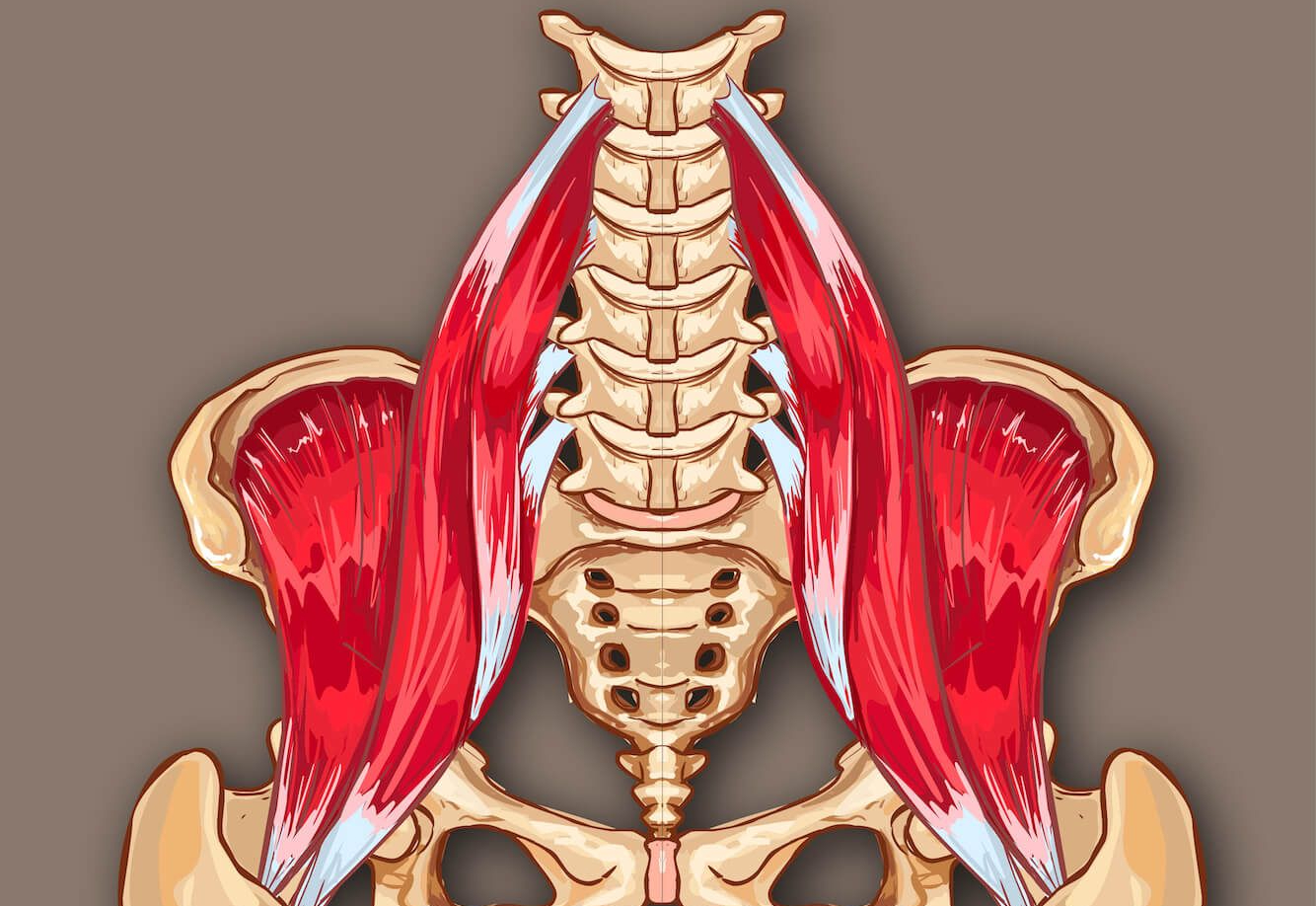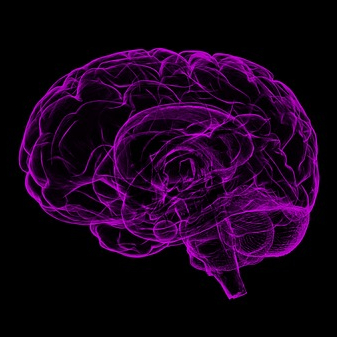The Psoas Muscle and Chronic Stress/Trauma
The psoas muscle, sometimes referred to as the “muscle of the soul,” plays a significant role in our physical and emotional wellbeing. This deep-seated muscle connects the spine to the lower body, and its primary functions involve stabilizing the core, assisting with movement, and supporting posture. However, the psoas muscle does more than just facilitate physical activity—it also holds a profound connection to our emotional state, particularly when it comes to chronic stress and trauma. In recent years, the psoas has gained attention for its role in how the body stores and responds to stress and trauma. This article explores the anatomy and function of the psoas, its connection to the body’s stress response, and how chronic tension in this muscle can be linked to unresolved trauma. We will also examine strategies for releasing tension in the psoas to promote healing and improve overall wellbeing.
Understanding the Anatomy and Function of the Psoas Muscle
The psoas muscle is a major muscle of the hip flexor group, consisting of two muscles: the psoas major and the iliacus. Together, they form the iliopsoas, which is responsible for lifting the leg and allowing movement at the hip joint.
Location and Structure:
The psoas major originates in the lower spine, spanning from the 12th thoracic vertebra (T12) to the 5th lumbar vertebra (L5). It extends down to attach to the lesser trochanter of the femur (thigh bone), making it one of the only muscles to connect the spine to the lower body. The iliacus muscle, on the other hand, originates in the pelvis and joins with the psoas major at the femur. Role in Movement: The psoas plays a critical role in actions like walking, running, and bending. It flexes the hip, assists in stabilizing the lumbar spine, and helps maintain proper posture. Connection to the Core: The psoas is a core muscle that helps to stabilize the spine and pelvis. It acts as a bridge between the upper and lower body, making it essential for maintaining balance and core stability.
The Psoas and the Body’s Stress Response
The psoas is not just a physical muscle; it also has a deep connection to the body’s stress response. When faced with a perceived threat, the body activates the sympathetic nervous system, often known as the “fight-or-flight” response. This response prepares the body to either confront or flee from danger, and one of the physical manifestations of this state is the tightening of the psoas muscle. This is because the psoas is intricately linked to the autonomic nervous system, which regulates involuntary bodily functions, including our response to stress.
The Role of the Psoas in the Fight-or-Flight Response
During a fight-or-flight response, the body releases stress hormones like adrenaline and cortisol, which cause physiological changes such as increased heart rate and muscle tension. The psoas muscle, being deeply connected to the nervous system, often contracts in response to these signals. This contraction is a protective mechanism, as a tightened psoas can help prepare the body to run or defend itself.
Chronic Stress and Psoas Tension
While this response is useful in acute situations, chronic stress can lead to prolonged psoas tension. When the fight-or-flight response is repeatedly activated, the psoas may remain in a contracted state even after the immediate threat has passed. This ongoing tension can create an array of physical issues, including lower back pain, hip discomfort, and poor posture. Furthermore, because the psoas muscle is so closely tied to the body’s stress response, prolonged tension in this muscle can also contribute to a heightened state of emotional arousal and anxiety.
How Trauma Affects the Psoas Muscle
Trauma, particularly unresolved trauma, can have a lasting impact on the psoas muscle. Trauma is often defined as an experience that overwhelms the body and mind’s ability to cope, leaving a lasting imprint on the nervous system. When trauma occurs, the body may enter a heightened state of alertness, leading to a sustained fight-or-flight response. In many cases, this can cause the psoas to remain tight long after the traumatic event has ended.
The Psoas as a Storage Site for Trauma
The psoas is sometimes referred to as the “muscle of the soul” because it is believed to be a storage site for unprocessed emotions and trauma. This concept is rooted in the idea that the body can store memories of traumatic experiences within its tissues. Somatic therapists and bodyworkers often find that clients with tight psoas muscles may have a history of trauma or chronic stress. This tightness can manifest as physical pain, stiffness, or a sense of unease in the body.
Emotional Manifestations of Psoas Tension
Because of its connection to the autonomic nervous system, tension in the psoas can also have emotional manifestations. A tight psoas may contribute to feelings of anxiety, fear, and vulnerability. In some cases, individuals may experience a “gut feeling” or emotional discomfort that seems to originate from the core. This is not surprising, given that the psoas is closely linked to the enteric nervous system—the complex network of nerves that governs the gastrointestinal system, often referred to as the “second brain.”
The Link Between Psoas Tension and Physical Health Issues
Chronic psoas tension can lead to a variety of physical health issues. Since the psoas connects to the lower spine and pelvis, prolonged tightness can pull on the lumbar vertebrae, causing lower back pain and discomfort. It can also impact the alignment of the pelvis, which can lead to hip pain, leg length discrepancies, and strain on the knees. In some cases, tightness in the psoas may even contribute to digestive issues, as it can put pressure on the organs in the abdominal cavity.
Techniques for Releasing Psoas Tension and Promoting Healing
Given the physical and emotional impact of chronic psoas tension, finding ways to release this tension is essential for promoting overall wellbeing. There are several techniques and practices that can help alleviate psoas tightness, reduce stress, and support trauma recovery.
1. Somatic Practices and Bodywork
Somatic practices, such as massage therapy, myofascial release, and craniosacral therapy, can be effective for releasing tension in the psoas. These forms of bodywork focus on the connection between the mind and body, helping to release stored tension and trauma from the tissues. A skilled bodyworker can identify areas of tightness in the psoas and use gentle manipulation techniques to encourage relaxation and release.
2. Yoga and Stretching Exercises
Yoga and stretching exercises are also beneficial for releasing tension in the psoas. Specific poses, such as lunges, hip openers, and backbends, can help lengthen and relax the psoas. Yoga practices that focus on deep breathing and mindfulness, such as Yin or Restorative Yoga, are particularly effective for releasing deep-seated tension and promoting relaxation. Poses like supta virasana (reclining hero pose), low lunge (anjaneyasana), and bound angle pose (baddha konasana) are excellent for stretching and releasing the psoas.
3. Breathing Techniques and Meditation
Breathing techniques and meditation can help regulate the autonomic nervous system and promote relaxation. Diaphragmatic breathing, also known as belly breathing, encourages relaxation by stimulating the parasympathetic nervous system, which counteracts the fight-or-flight response. Practicing mindful breathing and meditation can also increase body awareness, making it easier to identify areas of tension and consciously relax them.
4. TRE (Tension & Trauma Release Exercises)
TRE, or Tension & Trauma Release Exercises, is a method developed by Dr. David Berceli that involves a series of exercises designed to release deep tension in the body, including the psoas. These exercises aim to activate the body’s natural tremor mechanism, which can help to discharge tension and trauma held in the muscles. TRE has been found to be effective in reducing symptoms of anxiety, PTSD, and chronic pain.
5. Emotional Release Techniques
Since the psoas is closely tied to the body’s emotional state, emotional release techniques such as somatic experiencing, EMDR (Eye Movement Desensitization and Reprocessing), and talk therapy can be beneficial. These approaches help individuals process and release stored emotions and trauma, which can indirectly relieve tension in the psoas. By addressing the root causes of tension, emotional release techniques can facilitate a holistic approach to healing.
The Benefits of Psoas Release for Overall Wellbeing
Releasing tension in the psoas can have far-reaching benefits for both physical and emotional wellbeing. Physically, it can alleviate pain, improve posture, and enhance flexibility. Emotionally, it can help to reduce feelings of anxiety and promote a sense of calm and stability. Many people who have released chronic psoas tension report feeling lighter, more grounded, and more connected to their bodies.
Improved Core Stability and Mobility
A relaxed psoas contributes to better core stability, which is essential for maintaining balance and preventing injuries. Improved core stability can enhance overall mobility and make it easier to perform everyday activities with greater ease and confidence.
Enhanced Emotional Resilience
Releasing tension in the psoas can also enhance emotional resilience. When the psoas is relaxed, it becomes easier for the body to regulate the nervous system and respond to stress in a more balanced way. This can lead to a greater sense of emotional control, reduced anxiety, and improved mental clarity.
The psoas muscle plays a crucial role not only in physical movement and stability but also in how we process and store stress and trauma. This unique muscle, deeply connected to the nervous system, can hold onto tension and unresolved emotional experiences, manifesting as chronic pain and even impacting mental health. Recognizing the importance of the psoas in our physical and emotional wellbeing opens the door to more holistic healing approaches. By engaging in practices such as yoga, bodywork, breathing exercises, and trauma release techniques, individuals can work towards releasing tension in the psoas, fostering a greater sense of balance and calm. Addressing both the physical and emotional aspects of psoas tension can lead to profound improvements in overall health, allowing for a deeper sense of connection with the body and a more resilient response to stress. Through these mindful practices, we can nurture a harmonious relationship between body, mind, and emotions, creating a foundation for sustained wellbeing.



